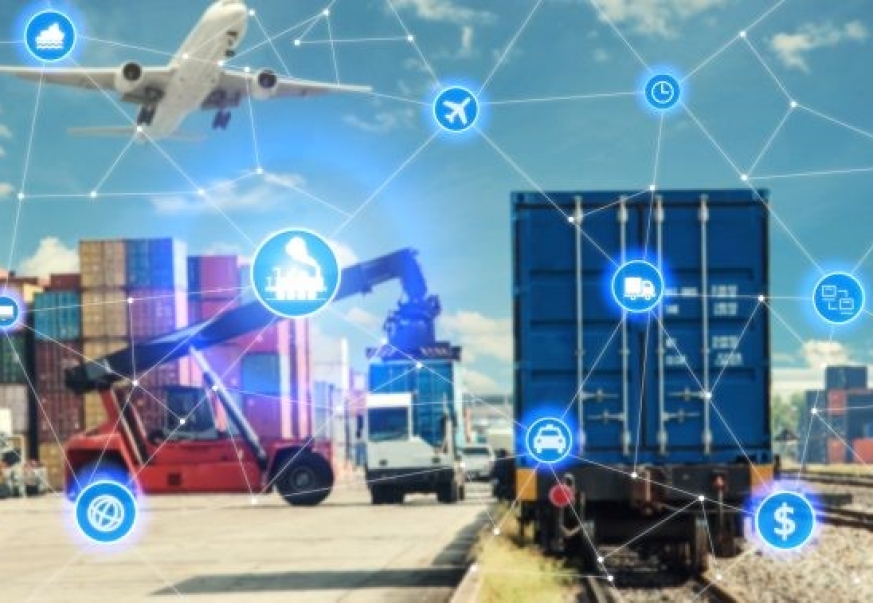Some trends affecting the global transportation industry in 2019
Some trends affecting the global transportation industry in 2019
Some trends affecting the global transportation industry in 2019
25/02/2019
25/02/2019
Moving into 2019, the global transportation (freight and logistics) industry will continue to face challenges from complex supply chains, but there are also many opportunities for shippers to apply technology and digital transformation to improve their operational efficiency and profitability.
Major changes – and a more holistic approach to global supply chain strategies. Tariff wars and unpredictable developments in global markets are forcing senior executives and supply chain professionals to rethink supply chain strategies and operations. What are their key strategic focuses? Managing global operational risk, understanding and mitigating the impact of tariffs on corporate finances, and responding to rising global supply chain costs.
Increased focus on data analytics in the supply chain. Data analytics is key for supply chain professionals who want to examine, analyze, and interpret data related to supplier risk, tariff risk, logistics costs, or manufacturing costs. 2019 will be the year of supply chain professionals with analytical skills and the ability to use software to mine and report on data, helping organizations make better, more informed decisions.
Increased focus on data analytics in the supply chain. Data analytics is key for supply chain professionals who want to examine, analyze, and interpret data related to supplier risk, tariff risk, logistics costs, or manufacturing costs. 2019 will be the year of supply chain professionals with analytical skills and the ability to use software to mine and report on data, helping organizations make better, more informed decisions.

Transport continues to benefit from Chinese investment in the Middle East and Africa, and infrastructure investment in modes including rail, roads, ports, bridges, and even schools will help the country continue to outpace the economic expansion of other countries as it builds long-term economic ties and trade partners. The development of global trade routes helps China’s economic influence expand even as trade with the United States declines.
Demand for faster delivery of e-commerce orders. Consumers’ increasingly high expectations for delivery services will continue to challenge retailers, carriers, and logistics providers, forcing them to fundamentally change the design, location of warehouses, and pay policies for different types of workers in the supply chain.
Enhance technology and innovate management methods. Technological innovations such as the online sharing economy, the Internet of Things (IoT), big data, on-demand logistics, and automated and autonomous equipment solutions will have a major impact on supply chains around the world. Going into 2019, logistics and supply chain companies will continue to leverage innovations in artificial intelligence, robotics, freight forwarding, demand matching, and blockchain applications to drive new efficiencies and reduce supply chain costs.
Transportation infrastructure bottlenecks and labor shortages in the US and EU. Damage from storms, floods, and snowstorms affecting ports and highways are major challenges for the global transportation industry in 2019, especially in the context of continued unpredictable climate change.
Demand for faster delivery of e-commerce orders. Consumers’ increasingly high expectations for delivery services will continue to challenge retailers, carriers, and logistics providers, forcing them to fundamentally change the design, location of warehouses, and pay policies for different types of workers in the supply chain.
Enhance technology and innovate management methods. Technological innovations such as the online sharing economy, the Internet of Things (IoT), big data, on-demand logistics, and automated and autonomous equipment solutions will have a major impact on supply chains around the world. Going into 2019, logistics and supply chain companies will continue to leverage innovations in artificial intelligence, robotics, freight forwarding, demand matching, and blockchain applications to drive new efficiencies and reduce supply chain costs.
Transportation infrastructure bottlenecks and labor shortages in the US and EU. Damage from storms, floods, and snowstorms affecting ports and highways are major challenges for the global transportation industry in 2019, especially in the context of continued unpredictable climate change.
Translated by VITIC/ reference logisticsmgmt.com

